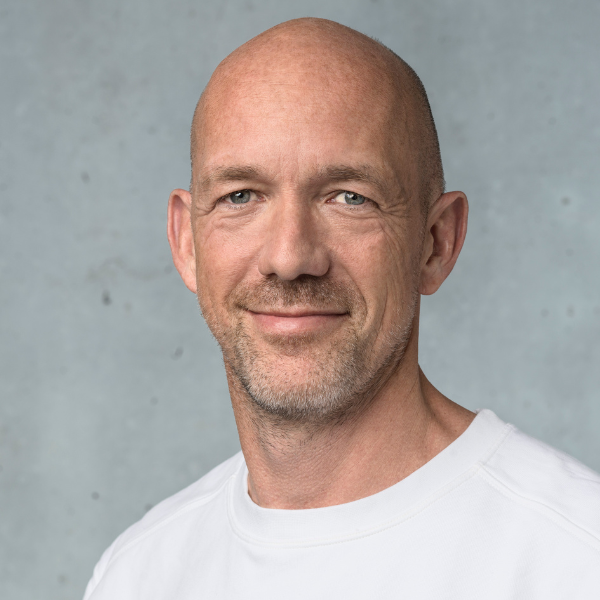
How can you focus on results over optics when every move you make can be scrutinized by millions of people? You find people who care more about mission than personal glory. On this episode of the FRICTION podcast, Stanford Professor Bob Sutton is joined by Jennifer Anastasoff, former Head of People at the United States Digital Service. This non-partisan tech group, run by the federal government, was created to better deliver government services and improve the lives of people in America. Listen up for these key takeaways:
- Don’t assume you know everything. Go where your users are and learn from them.
- The smartest people in the room usually aren’t the ones saying it.
- Hold each other accountable to both internal and external standards.
Bob Sutton: Hi, I’m Bob Sutton. I’m an organizational psychologist and Stanford professor. And this is The Friction Podcast. On today’s episode we have Jennifer Anastasoff Jennifer is former head of People at the United States Digital Service. I asked Jennifer to join me on the podcast because of her experience navigating the red tape and bureaucracy of the United States Government. Jennifer was responsible for scaling the United States Digital Service from a small team of three into 2014 to an office of over 200 people in just two years.
Jennifer Anastasoff: So we had three people who started in August 2014 at the United States Digital Service. I started out as the sole person in charge of building the team and I–
Bob: Where were you physically located?
Jennifer: We were physically located in a house that Teddy Roosevelt lived in right outside of the White House.
Bob: Oh that’s great.
Jennifer: Yeah there are these townhouses right outside the White House compound and we were in one of those townhouses. And it’s interesting because it was this weird mix of cultures clashing there too because we’re in this old sort of regal venue right. This is where a president lived with his family for a little while.
Bob: So it looked like startup in Teddy Roosevelt’s old house?
Jennifer: It looked like a startup in Teddy Roosevelt’s old house. And we had a broken air hockey table downstairs that I had to take a Saturday to help this lovely human who got it at a garage sale walk that sucker downstairs. And so we had a broken air hockey table. We had things hanging from the walls downstairs. I had questions about that. We had a room we called the Oval Office that was basically where all the wires were kept. There was no quiet place for us to meet because it was this big open space. And so that was where we would go to try to hide and have phone calls. And that’s pretty much what we had. I remember when we had an argument at the beginning when all of us were talking, we were saying, where should we all work? And should there be stable computer stations?
Bob: Ooh.
Jennifer: Because some people like to sit and work at the same computer station. And some people like to sort of hostel their working area.
Bob: Right right right right.
Jennifer: And there was a long discussion and this is when there were three people and then it got to 10 and so on. But by the time I left there were 206 people. In October of 2016 I dyed my hair blue because I had promised the talent team that if we could get to 200, right if we could get to 200 because I was told we couldn’t get to 20.
Bob: So let’s focus on what you did, to me, you’re building a culture, you’re building work practices.
Jennifer: Yes.
Bob: So describe some of the key things that, what you learned and how you learned to start having a positive effect.
Jennifer: Whenever we think about culture, I always think about our values and how we came up with our values. I remember specifically the administrator saying how we work is as important as what we accomplish and what we do.
Bob: Ooh, that’s pretty good value.
Jennifer: And that wasn’t even a value. That was just how we came up with our ideas right. And the way he looked at the creation of our values was we pulled hundreds of people together, lots of people together to come up with these values. There were lots of meetings. There were, it was online for people to comment on. We had potential values. We had an analog version so as people walked in the door when we were considering our values, as anyone walked into our door there was a huge easel.
Bob: So you literally did crowd source, kind of prioritized.
Jennifer: We crowd sourced it, yeah.
Bob: Oh okay. Good so I think I have the list right here.
Jennifer: Yes, I’ll share what the values were. They were hire and empower great people. Find the truth, tell the truth. Optimize for results, not optics which is very interesting when you’re in a political environment. Go where the work is. And just be specific for people outside. Go where the work is means, if you have work to do, don’t do it from Teddy Roosevelt’s old house.
Bob: You go sit where the users are.
Jennifer: Go sit where the users are and go sit where the people who are working on it are. Don’t make assumptions. Get out there and find out what’s really happening. Create momentum. So I’ve heard a lot of stories about what happened in the past and how people tried to change. And have tried and have continued to try to change government and a lot of times it starts with there’s this big thing, and we have to change this big policy thing. And we’re gonna change the big thing. And if we don’t, someone should suffer for it. And if we do, it’s all my, I did it, I’m awesome. There’s very little room in all of this for a hero narrative. You’ll hear it but there’s very little room. Even the start of USDS started years before us. There was a group of people who had actually spent at least a year making sure we could hire people in less than eight to 12 months.
Bob: Yeah ’cause government can take forever, right.
Jennifer: Right, and so what is so interesting to me to see is how critical our values and the USDS’s values have been to keeping the organization steady and moving forward during some pretty tough times. And what’s interesting, it’s not that suddenly everything was easier because there was a change. They were hard but our struggles were different than they would have been because we together knew the purpose that we were there for and knew how we were gonna plan on working together. And so that was absolutely critical.
Bob: So one of my wife’s favorite lines when she’s starts dealing with people who get in ideological discussions. She says, can we figure out the 98 or 99 percent we agree on first and then we can start disagreeing about the other two percent. And I think that’s a pretty good line.
Jennifer: I started out as the sole person in charge of building the team and I remember my first conversations with humans out in the Valley with leaders in the Valley with engineers. My first conversations were generally around the concept of there’s no way in hell people are going to go from Silicon Valley to Washington D.C. A to work in the government and B because it’s D.C.
Bob: So you’ve got that divide.
Jennifer: It’s just very different right because you’re going from a place where hierarchy, this is just my personal opinion, no matter what tech says, there’s hierarchy here.
Bob: Oh there is really, yeah yeah
Jennifer: There’s quiet hierarchy, there’s flat hierarchy.
Bob: No there is hierarchy, there’s always yeah.
Jennifer: But moving from a more hierarchic goal, set of organizations or even if it’s a place where decisions can be made quickly to a place where what’s valued is consensus. And what’s valued is engaging others and stakeholders and like bringing people along. In the private sector and specially in tech I see people valuing, like doing the quote unquote right thing and wanting to find what that right thing is. When you’re looking at social change you also have to talk to different people who have different answers to what the right thing is. And maybe you don’t have the only answer to what the right thing is because you’re working in a community where maybe they know better than you do. So that was always a huge change for people. When you talk about friction, I believe some friction is good.
Bob: Yeah yes yes.
Jennifer: Right because you come into a place, sometimes you need a little time to figure out what’s right.
Bob: Yes some friction is good and some disagreement is good. But let’s go back to your story. ‘Cause your story really is interesting. So you’ve got all these years of experience of bringing people from a private sector into the public sector and helping them succeed and I imagine the goal is to keep the best of what their skills are to get them to function in a different sort of world.
Jennifer: Absolutely.
Bob: So how do you make an organization work, people who are used to just doing whatever they want in an environment where well they might be pushing it but there’s more friction.
Jennifer: Yeah well first we were looking for the right folks. We were looking for people who are entrepreneurial who could do something with nothing. We knew we needed people who were flexible in their beliefs and who would push but were respectful. So sort of that humble but gritty folks.
Bob: So you didn’t look for I’m the smartest person in the room. I want to be the man or the woman that everybody turns to, that sort of person.
Jennifer: We found the smartest people in the room but it turned out that the smartest people in the room weren’t running around saying that they were the smartest people in the room.
Bob: Smart and humble so that’s yeah yeah.
Jennifer: And so everyone had to recruit. It was expected that everyone would spend time going out and identifying folks.
Bob: So how did you and other leaders create a situation where it’s okay to have a constructive confrontation?
Jennifer: I think one thing that I didn’t mention in hiring is we hired people who had a mission focus.
Bob: Ooh, what does that mean?
Jennifer: Which is all they wanted to do, everyone who came, all they wanted to do was to make sure that our government worked today for the people who needed it. That’s why everyone joined. And so we were sort of this loose group of semi autonomous like small groups of semi autonomous people who were working, who were held by this film of, we’re here to do the right things for people. We’re here to help humans access services that they deserve. And so that’s why people joined. And we thought about whether or not we were doing that.
Bob: So clearly you hired a lot of people who were confident and had probably fairly strong egos? But it sounds like people still were pretty cooperative. So how do you create a culture or look for people who have, can push their point of view but at the same time can be cooperative enough to get stuff done together. ‘Cause I can imagine this completely degenerating into a Lord of the Flies or for all men testosterone poison sort of environment.
Jennifer: And that’s why it’s important to have a diverse group of people who are working on these projects. Honestly that internal drive to hold each other accountable to high internal and external standards. How you work is as important as what you do means that we have to hold each other accountable to that. And so there was absolutely ego. And in our hiring process, specifically we asked the question, when have you failed? You’d be surprised how many people will say, I’ve never failed, I don’t understand what you mean. And that’s something to know because we fail all the time.
Bob: In Scaling Up Excellence, Huggy and I we stole this from some executive, but our definition of an organization where there’s good accountability is the feeling that I own the place and the place owns me. So and to me you’re describing that sort of thing which is that, if it’s just I own the place, I can tell everybody what to do, but if the place owns me, that means they’re holding me back too. So there’s that two way sort of responsibility for me to do the right thing and to criticize them when they’re doing the wrong thing. But it’s tough. In real life, every day you gotta fight it out.
Jennifer: It’s the commitment and I keep saying this but I think it’s so true, I think there’s this vision that solving problems together in an effective team is easy. And there’s this sense that when you get to a certain level then it’s gonna be easier. And I think that that’s just misguided. It’s that you have a group of people that ultimately has committed to doing that hard work together and knowing that it’s gonna be hard. What I loved when you came up with the values was this concept that it’s not just that you have to operate by them, but that they’re not real bonafide values unless anyone at any level with any title could bring those values up in any decision and get them to be reevaluated because they don’t meet our values. If that can’t happen then the values don’t matter, they’re not real.
Bob: So that’s really, I get all these emails about assholes, as you know, you have to put up with assholes.
Jennifer: I would think so.
Bob: And this guy writes me this note and he said, so when people are being assholes in meetings, what I do is I get out the corporate values and I read them and I ask them whether this is supporting or undermining our corporate values is just incredibly effective. It leads to more civilized and more ethical behavior. And I just love that email.
Jennifer: So the VA, they have a health care website. And in order for veterans to get the access to health care, to literally see a doctor, they can sign up on this website or they can go sit every day for however many hours. I have a friend who went every day for two weeks to sit and he sat there with his laptop everyday after he left the Army. And he would just sit there and they would say oh do you want to make an appointment. I have an appointment for a long time from now. I’m just gonna sit here and if someone has time to come see me, that’s great. I’m just gonna be right here.
Bob: Wow.
Jennifer: And he did that for weeks until someone said, you know why don’t you bring him in and he can get his benefits. But there is a website that was up. It was up for veterans to sign up for health care. But less than 10 percent of people who went to that site signed up. Why is that? Well it turned out that it was because it was physically impossible for them to sign up.
Bob: Well that’s a wall, that’s not even friction.
Jennifer: Well I mean some people found their way through it. You just had to have a very specific browser and a very specific version of in order to actually to be able to sign up. But initially folks who had looked at had said gosh you know I guess people just don’t like to sign, vets don’t like to sign up online. That must be it.
Bob: I wanna take that story apart a little bit because I think, so you’re in this world where there’s bureaucracy in constraints and some of it’s reasonable by the way. And you got people from Silicon Valley who are used to for better or for worse move fast and break things.
Jennifer: Yeah.
Bob: In fact you had people from Facebook as I recall.
Jennifer: Yes I did.
Bob: So you got these, the hot shots from Silicon Valley and then you’ve got well the VA is a really really bureaucratic organization. So how do you make that work?
Jennifer: I think it goes back to starting with the user. So starting with the vet. If literally, if you and I Bob, if we were gonna create the most frustrating process ever, we probably, planning it wouldn’t come up with as good of a frustrating process. As has been come up over many years and many layers at the VA and throughout government. And so the team that went in talked to veterans and literally did a video of a veteran trying to sign on.
Bob: Perfect.
Jennifer: That veteran, Dominick, had tried to sign on twelve times and had been unable to sign on to the site. And as he was signing on he made some comment like it’s like trying to go over the hill and through the woods, past IEDs that are blowing up and then he had a choice word that he shared and he said it’s like, the VA’s just telling me they don’t want me to sign up. And that video also showed him trying out a new site that had been based on user experience.
Bob: There ya go.
Jennifer: And conversations with vets. And it showed him saying, yeah this is amazing. Wow it just says right here, big button, press this to apply. What’s your name, it’s very easy for me to sign up. The government should use something like this. And it was actually the government right that had.
Bob: Right.
Jennifer: And so that was amazing because it was huge for people at all levels of government to see how frustrating it is. Because I think that’s part of what you lose in a larger bureaucracy in an organization is that sense of, it’s not just numbers and it’s not just policies. It’s not just regulations and we’ve got to figure out how to make sure that that veteran, that one veteran gets access to what they need to get access to. Because if they don’t, it hurts their lives. Like he had taken, Dominick had taken time off of work. He had PTSD, he had kids he had to put through school, and he had taken time off of work to try to sign up and failed.
Bob: How the heck given the political environment in the fake or real news, whatever you prefer to call it, how do you optimize results not optics in that world? As an outsider it just seems impossible to me.
Jennifer: So I’ll start with a decision that we made when we started USDS which was that we weren’t for the first six months I think it was we did not actively seek out press. Many programs are started in government by press release. There’s a joking statement that’s it’s you know, program by press release. Someone comes up, has a great idea, says we’re gonna start this thing and suddenly now you have to create the program and see if it works. We very actively wanted to make sure we had done enough good work and that we had actually had results before we said anything. That’s one thing honestly that I really love about working with engineers and that I really love about working with people who deeply care about data and who deeply care about making sure that we’re doing the right thing from a data perspective, be able to show it.
Bob: So let me throw out some of the lessons that I take from that and have you comment on them.
Jennifer: Sure.
Bob: The first one which is a theme and apparently Harry Truman didn’t say this but I always misattribute to him like everybody else did. It’s amazing how much you can get done if you don’t worry about who gets credit. That seems to be to be an underlying value of the USDS that you’re talking about. And then the other thing is there’s all this notion that if you have transparency and celebrated heroes. That it’s gonna be great but it’s not always so good. You’re making the argument that people who sort of hide in the corner and do the right thing, stay away from the press and the press and management part sometimes can actually help you do the right thing and oh and gee by the way have better stuff to brag about later too.
Jennifer: That’s one of the things that is so interesting about this work is that we had this small group of people but we had amazing air cover and so what that meant was that the entire federal government had gone through and had seen what can happen when technology fails to serve citizens. They had seen, the president had seen it, the administration had seen it and didn’t want that to happen again. You know the digital service had the support of a very divided Congress while President Obama was in office. When he got started Democrats and Republicans supported this because people have an understanding across aisles and ideologies that government should do what it says it’s going to do and should do it well. And the idea that we had results, not just optics, but results that we could show that we were doing, we were making things more effective. We were making things more efficient. It was exceedingly helpful.
Bob: So it is interesting, let’s talk about air cover. If you’re gonna do something that is likely to meet a lot of resistance, that there is an argument, this is a case where having the authority of air cover actually helps.
Jennifer: Yup.
Bob: ‘Cause you’re allowed to break the rules. People don’t ask so many questions.
Jennifer: Well I would be careful, ’cause in government, we’re not allowed to break the rules.
Bob: Okay.
Jennifer: But the issue was that people who were, like a lot of time the interpretations of the rules in government, the rules were interpreted as if it doesn’t explicitly say something is possible, then it’s not possible. And that’s just not the case. So when folks were introduced to Cloud. It doesn’t say we can store data in places that aren’t servers in a room. Therefore we can’t store data in places that are servers in a room. Or it doesn’t say that we can go out and ask students whether or not this works for them. So we can’t go out and ask students whether or not.
Bob: So that’s assumption, there’s an implicit no. Or there’s an implicit yes if it’s not written now.
Jennifer: And that’s one of the cultural differences I would say between for profit in a lot of cases not every cases but in for profit and in the public sector broadly which is a lot of people can say no to anything.
Bob: Right.
Jennifer: Anything, and one person in one place that’s in a small place in a corner. Sometimes you don’t even know who you are can kill it. And a lot of people have to say yes for anything to happen. And so when I say air cover, there are two aspects to go over. One was when the president says this is important we gotta do it, that’s great and that’s very helpful. And a lot more people are willing to say yes or entertain a yes. A lot fewer people will push back for no reason.
Bob: So I really like the stuff that you said about air cover and one of the problems in many bureaucracies is that sometimes people get in what I call the malicious compliance mode.
Jennifer: Oh yeah.
Bob: And that’s where they see themselves as automatically saying no to everything both because they’re afraid something’s bad’s gonna happen or they’re gonna get blamed and because it gives them the feeling of having power over other people but that notion that we’re going to assume it’s a yes within the constraints of the rules as opposed to assuming it’s a no, it’s very powerful. And it does reduce needles friction and wheel spinning too.
Jennifer: Well what’s also powerful though I would say is saying how can I help you be more powerful in accomplishing the goals that you want to accomplish?
Bob: That’s great.
Jennifer: Because most of the time people come in and say, well the first piece, not the second piece.
Bob: So I would like to thank our guest today Jennifer Anastasoff. She’s done lots of interesting things but today we especially focused on the three and a half years she played a key role in helping to build the United States Digital Service. So thank you so much for joining us Jennifer.
Jennifer: Thank you.







